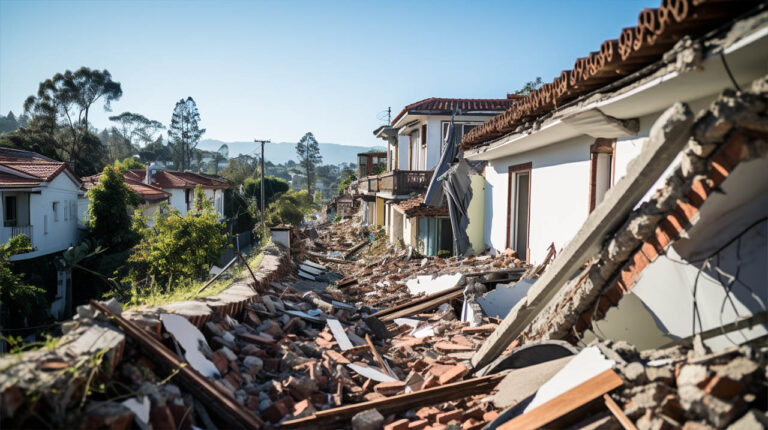Earthquakes pose a significant threat to buildings, especially in regions prone to seismic activity. The roof, being a crucial component of a building’s structure, plays a pivotal role in ensuring the safety and integrity of the entire edifice during such events. TecHero Roofing, with its years of experience in the industry, sheds light on the best practices and materials for earthquake-resistant roofing.
Key Features of an Earthquake-Resistant Roof
When considering roofing for earthquake-prone areas, it’s essential to prioritize certain features:
- Lightweight Material: Contrary to popular belief, a heavier roof isn’t always better. A lightweight roof reduces the overall strain on the building during an earthquake, minimizing potential damage.
- Structural Integrity: The roof should be designed to tie all sides of the building together, enhancing its ability to withstand side forces like wind and seismic tremors.
- Optimal Roof Slope: A roof slope between three and 15 degrees is recommended for optimal earthquake resistance.
Enhancing Your Roof’s Earthquake Resistance
TecHero Roofing suggests several methods to bolster your roof’s resilience against earthquakes:
- Roof Blocks: Placing roof blocks between each roof rafter, especially where rafters join exterior walls, can distribute lateral earthquake loads more effectively.
- Secure Fastening: Ensure roof rafters are securely fastened to the top of home walls. This enhances the transfer of lateral stress loads, helping maintain the building’s integrity.
- Seismic Ties: Incorporating metal strap connectors, known as seismic ties, can significantly improve the roof’s structural integrity during seismic events.
Roof Sheathing: A Critical Component
The type of roof sheathing or decking used can greatly influence a roof’s earthquake resistance:
- Plywood: Ideal for earthquake durability, it should be installed perpendicular to the rafters for maximum strength.
- Oriented Strand Board (OSB) Sheathing: Equally strong as plywood, OSB sheathing is a top choice in regions prone to natural disasters.
- Particleboard: Generally weaker than the other two options, it’s not recommended for earthquake-prone areas.
Evaluating Common Roofing Materials
Different roofing materials offer varying levels of earthquake resistance:
- Clay Tiles: While aesthetically pleasing, they’re fragile and can add significant weight to a building, making them less ideal for earthquake zones.
- Asphalt Shingles: These can be considerably heavier than other materials, potentially compromising structural integrity during seismic events.
- Wood Shake and Shingles: Lighter than asphalt shingles and clay tiles, they offer limited structural reinforcement.
- Metal Roofing: Stone-coated metal roofs, like those offered by TecHero Roofing, are lightweight and provide excellent shear strength, making them a top choice for earthquake-prone areas.
North Hills Roofing: A Testament to Quality
TecHero Roofing has been a trusted name in North Hills roofing for years. Our expertise in roof repair in North Hills and our reputation as a leading North Hills roofer have made us the go-to choice for many homeowners in the region. With a keen understanding of the unique challenges posed by the local environment, we ensure that our roofing services in North Hills CA are second to none.
Conclusion
Choosing the right roofing material and ensuring proper installation techniques are crucial for homes in earthquake-prone areas. TecHero Roofing’s commitment to quality and safety ensures that your home is equipped with a roof that not only looks great but also stands strong against the forces of nature.


